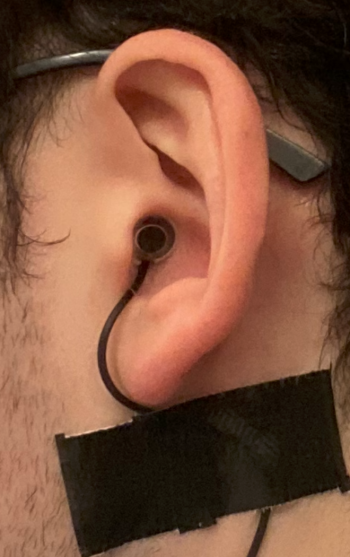I’ve heard if you have noise cancelling and transparency modes off that it turns adaptive EQ off is that right?
Nope, but the algorithm seems to work a little bit differently and requires a broad signal (noise, music) to work properly (not sine sweeps).
Adaptive EQ seems similar to what most advanced ANC headphones can achieve : basically, up to a certain frequency, the ANC feedback mechanism is able to deliver an exact dB value for a specific digital value, across multiple users, and regardless of pad compression, seal breach (to a reasonable degree), etc.
For people familiar with frequency response :
Rtings measures headphones' bass levels on five real human subjects, up to a few hundred herts. ANC headphones with a solid feedback mechanism tend to be the most consistent ones across different users, at as far as closed backs are concerned :
Frequency Response Consistency describes the variations in a pair of headphones' frequency response due to their fit on your head.

www.rtings.com
Ex :
https://www.rtings.com/headphones/1-5/graph#565/7914
Another way to illustrate what Adaptive EQ does is to measure headphones with various degree of compression on the pads and see whether or not it affects the response :
Important notes :
- These measurements were made on my head with blocked ear canal entrance microphones. They look like this :

- Individual measurements, these aren’t averaged, right ear only. 1/48 smoothing.
- The measurements were made with sweeps. For the ANC headphones measurements done with noise were made to check whether or not the signal affected the results (it didn't - although it may do for the APM when ANC is off).
- The traces were not normalised.
- The blue trace is the HPs as they naturally sit on my head. The red traces are varying degrees of compression or even pull.
- The compression / pull was made manually. This is why the repeatability of the exact degree of compression is poor, and some traces are noisy at lower frequencies. But that should be enough to get an idea of how the feedback mechanism works, at least compared to no feedback. It looked like this during the measurements :

- The absolute values are incorrect, only look at the relative values between the traces for the same headphones.
- The relative values between the headphones are most likely incorrect in between around 1.5-4.5kHz (perhaps above), they react differently to the load of the ear canal (remember : these are blocked ear canal measurements), and in different ways, and some are more sensitive to it than others. I repeat : only look at the relative values between the traces for the same HP.
- The Bose QC45 has a volume dependent EQ. Initial quick tests suggest that it’s a very dumb implementation, that only looks at the internal volume setting to apply an equal loudness compensation curve, and doesn’t look at the digital values of the incoming signal. So you’ll get different results if you test them at internal volume 20% vs. 80%, but not if you compare a test signal at -10dB vs -40dB. 50% (on my Mac or iPhone) corresponds to the volume Iimit I don’t really like to go above when listening to music with them. They’re new and the pads haven’t broken in yet (may play a role, or not).
- The pads weren’t warmed up before measuring the headphones. I’m not certain but I believe that it plays a small role for some of them (K371 mostly).
You can see that the feedback mechanism successfully maintained a similar response in the range where it operates (up to around 500-600Hz for the Sony, 700-800Hz for the APM, 800-1kHz for the Bose).
I am skeptical that the APM's adaptive EQ works above that frequency or that the DSP does any fancy tricks. The response seems to start to show a variable behaviour above, constant with a lack of ANC feedback, but I've seen some irregularities up to 3kHz or so that makes me a little it flummoxed.
In regards to @Coltaine 's question, applying your own EQ on top of it will affect the frequency response as expected : Adaptive EQ (= feedback mechanism) simply ensures that the right dB value is delivered for a specific digital value, below a certain frequency.
I believe that Adaptive EQ still operates when ANC is turned off, but that the algorithm may require a broad signal to properly operate in these conditions.
This is the APM measured with ANC on (fuchsia traces) and off (turquoise traces), with both sweeps (bottom traces) and white noise (above traces) :
Notes : same as above, please don't look at the absolute values, only at the relative differences between the traces.
These are individual traces, no averages. Please discard data below 50-60Hz, some of the difference is caused by nuisance variables that weren't properly controlled.
You can see that when using noise as a signal, the traces align with each others. When using sweeps, when ANC is on, the results are repeatedly the same and the traces correspond to noise measurements, but when ANC is off, the traces deviate a little bit and in irregular way. The individual trace shown above is a good representation of the sort of variation I'm seeing.
Music is a broad signal so I think that frequency response is meant to be the same whether ANC is on or off.
To confirm that I'd need to test ANC off
with white noise with varying degrees of pad compression but for various reasons feasibility is a little difficult with the same methodology as above.




